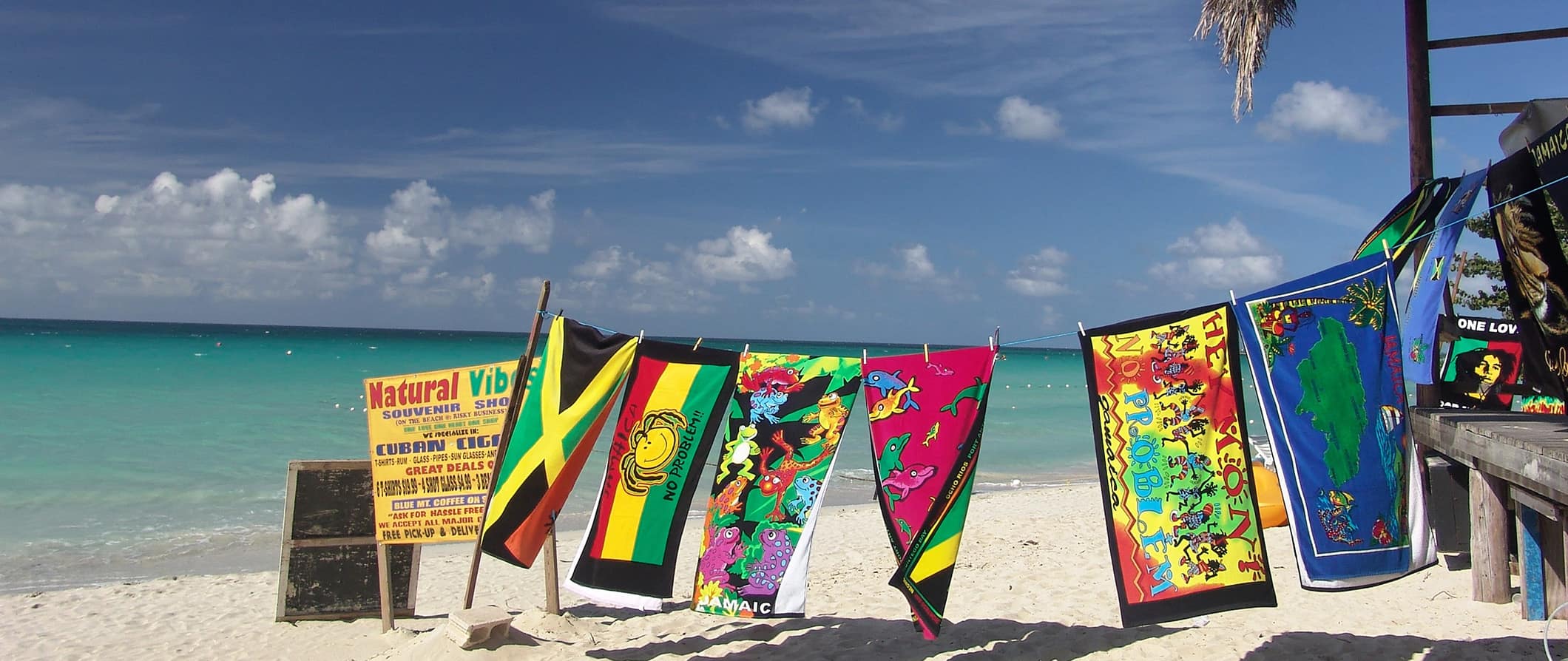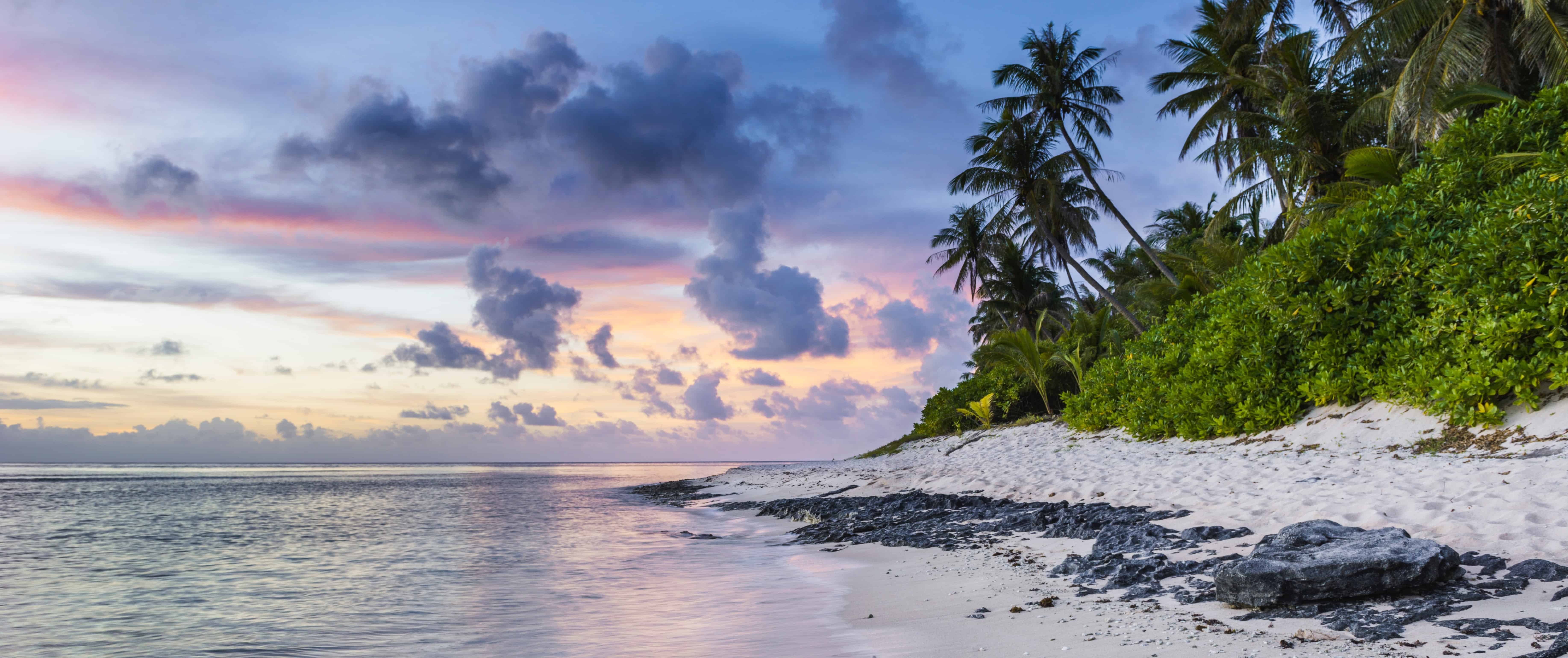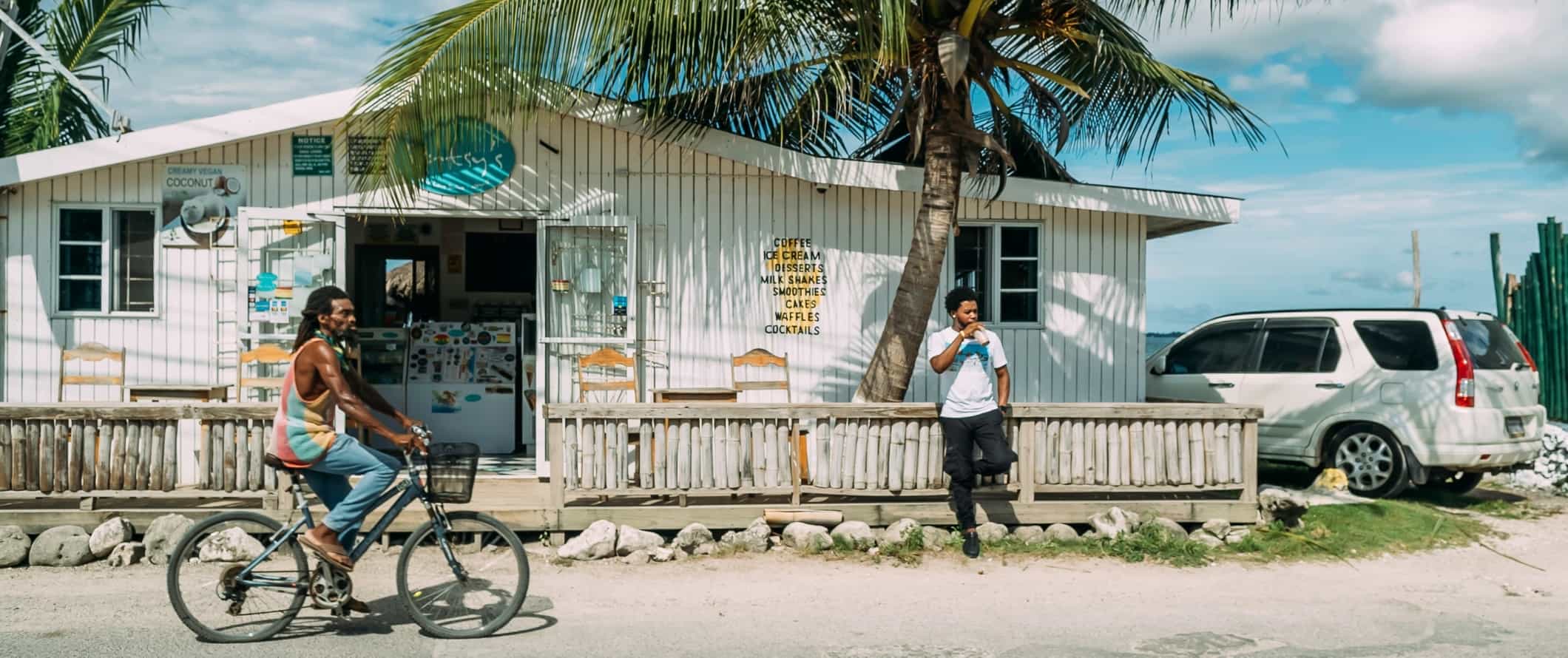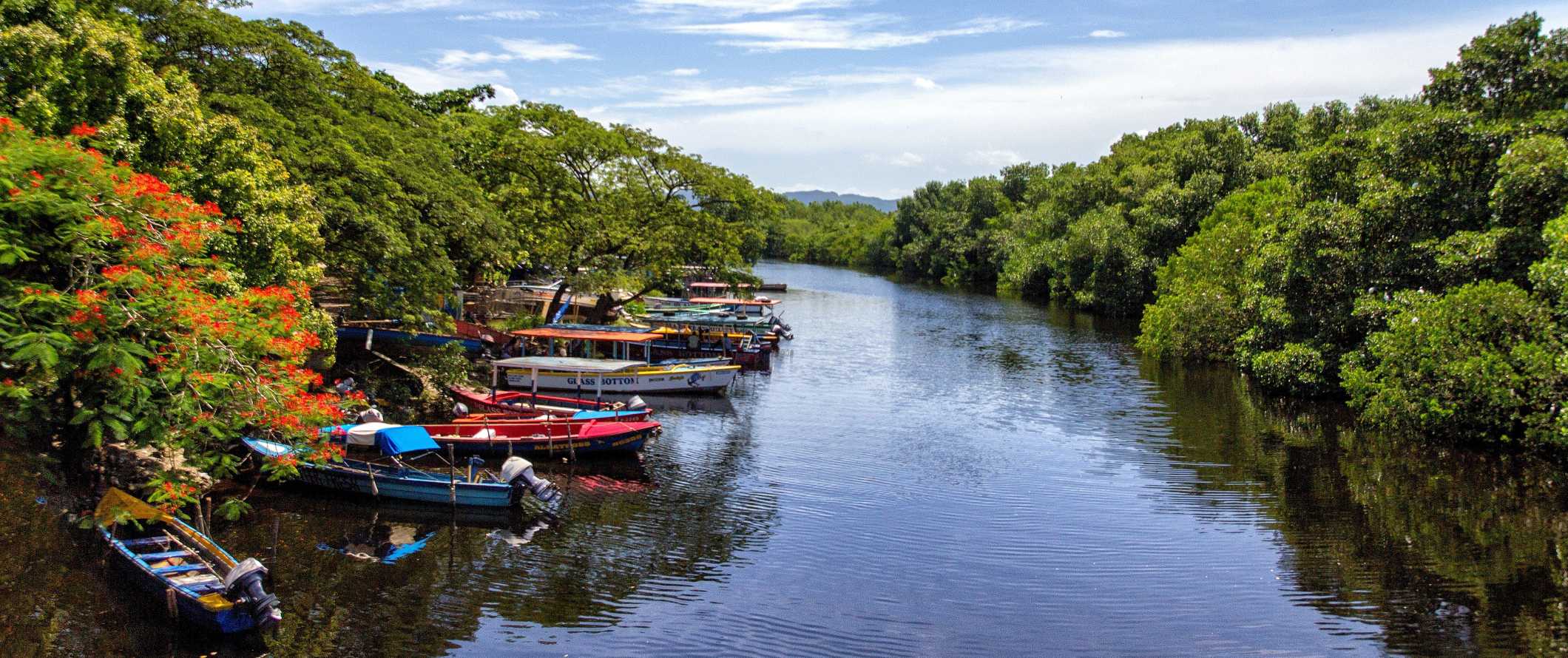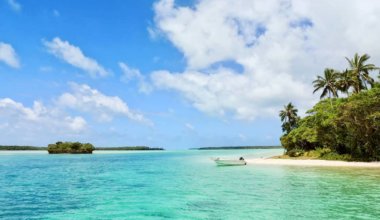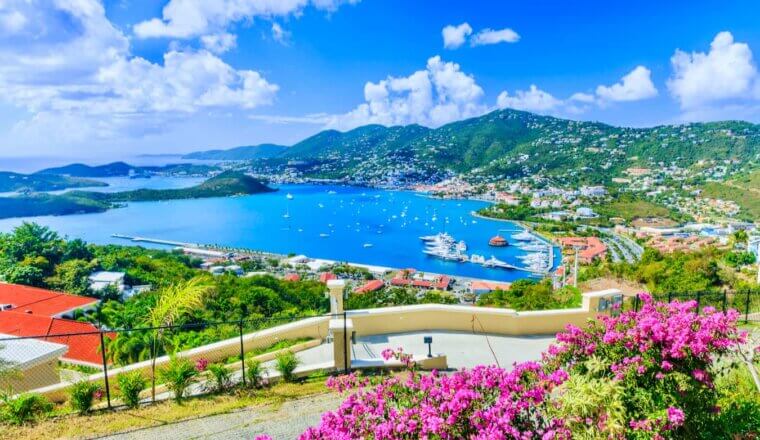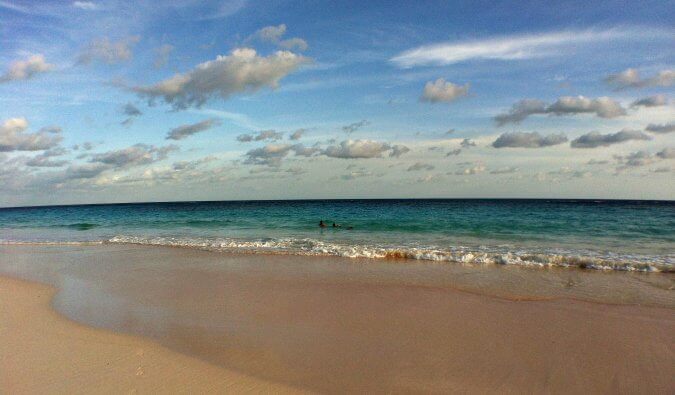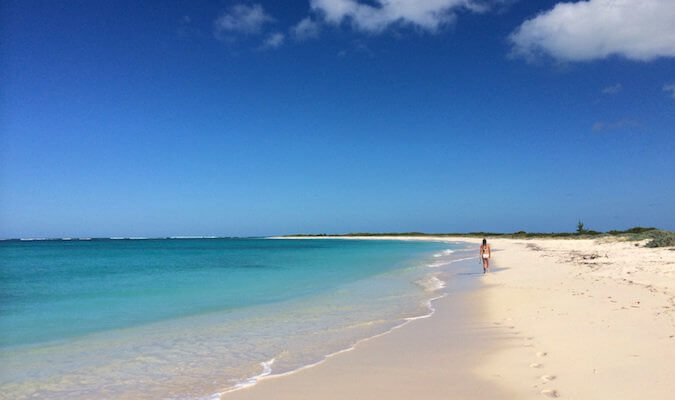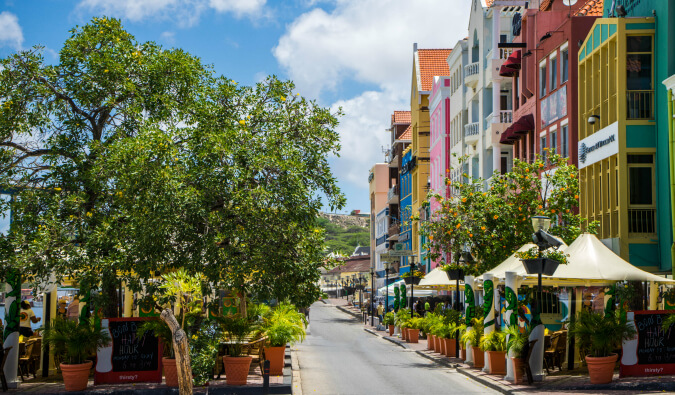With its laid-back pace, stunning beaches, rugged mountains, lush rainforests, picturesque waterfalls, and lively music scene, it’s easy to see why Jamaica is one of the most popular destinations in the Caribbean.
The third-largest island in the region, Jamaica has more churches per square mile and more rum bars per capita than anywhere else on the planet.
Unsurprisingly, the island attracts a wide crowd and has plenty to offer travelers of all stripes. Whether you’re looking to relax, splash out, or party, Jamaica has you covered.
Although it’s easy to lounge away most of your time on the beach, try to experience the local music scene and Rastafarian culture while you’re here. It’s what gives the island its iconic flair.
This Jamaica travel guide has all the practical information you need to help you plan your visit, save money, and make the most out of your time in this island paradise!
Table of Contents
Top 5 Things to See and Do in Jamaica
1. Cliff jump at Rick’s Cafe
Rick’s Cafe was founded in Negril 1974 by Richard Hershman and is now in the list of Top 10 Bars in the World. This restaurant and bar overlooking the ocean is a popular place for locals and visitors alike with spectacular sunsets and cliff jumping. It’s about 35 feet to the water, so if the height is too much for you, you can just relax and enjoy the view with a drink.
2. Go on a rum tour
Rum, made from fermenting and distilling sugarcane, is one of Jamaica’s biggest exports. If you’re a rum aficionado, this is your chance to get up close with the production and tasting process. Tour Appleton Estate in St. Elizabeth, voted one of the best in the Caribbean, which has been producing rum since 1749 (they produce 10 million liters of rum each year). It’s located in the beautiful Nassau Valley and offers the chance to learn how rum is produced (samples included). Worthy Park and Hampden Estate also offer rum tours.
3. Hang out at the beach
Jamaica is rich with soft, powdery beaches. In Montego Bay, head to Doctor’s Cave Beach on Jamaica’s Hip Strip, one of the country’s finest and most popular beaches with miles of impeccably white sand and sparkling waters that are said to have healing properties. It’s also a great place for snorkeling. If you want something more secluded, choose Cornwall Beach with its chill vibes, lounge chairs, and sunset beach parties on Sundays. In Negril, Seven Mile Beach has a history of pirates and stunning turquoise perfect water with something for everyone including water sports, snorkeling, diving, and more. You can even rent jet skis or kayaks and explore on your own or go horseback riding on the beach. There are many eateries and restaurants for incredible seafood and places to take in the sunset. And past the overpriced hub around Margaritaville, you’ll find quieter stretches of pristine sand.
4. Lose yourself in the clouds
The Blue and John Crow Mountains National Park lies to the east of the island and covers over 100,00 acres. It’s a UNESCO World Heritage Site and home to many rare and endangered mammals, amphibians, and bird species. The Blue Mountains here are the longest mountain range in Jamaica and offer incredibly lush scenery of 1,300 flowering plants and 530 fern species. It’s a great place to bird watch and hike the Holywell Nature Walks that take you through the rare tropical Cloud Forest. A short drive from Kingston, this park offers hiking, biking, and coffee plantation tours.
5. Explore Montego Bay
Montego Bay is the third largest city in Jamaica and the top place for tourist bars, international restaurants, beautiful beaches, and epic parties. There are tons of things to do here, from chilling and floating down the Martha Brae River on a bamboo raft, doing eco-adventure tours to the Rockspring Caves, or visiting the 18th-century Rose Hall Great House Georgian mansion. There is the famous Luminous Lagoon, one of the most popular bioluminescent bays in the world that offers a rare chance to see glowing blue waters at night. If you’re a foodie, there are several Jamaican food tours where you can taste delicious jerk chicken and other local favorites.
Other Things to See and Do in Jamaica
1. Raft the Rio Grande
For a unique look at the landscape, head to the Port Antonio area and take a guided trip down the Rio Grande River on a bamboo raft. This is one of the best ways to see the many caves, waterfalls, and crystal springs that are tucked away throughout the island. A three-hour rafting trip costs 15,500 JMD per person with Rio Grande Rafting Tour.
2. Go snorkeling
On Jamaica’s northern coast, you’ll find a wide array of sea life. Here you can go snorkeling and see coral, stingrays, lionfish, barracuda, and more. Ocho Rios is another exciting place to snorkel, with plentiful scorpionfish, lettuce sea slugs, and nurse sharks. Guided trips start around 5,300 JMD.
3. Explore the Green Grotto
Over 1,000 caves dot the Jamaican landscape. Green Grotto Caves on the north coast is probably the most famous. The caves are made of limestone and the tides have etched the walls with the green algae that have given the cave its name. As you move through the cave, you’ll walk through a forest of stalactites and stalagmites. Fun fact: Spaniards hid here in the 17th century when the English invaded Jamaica. Entry is 3,050 JMD per person.
4. Tour the Sun Valley Plantation
Visit the Sun Valley Plantation in Ocho Rios to learn about the island’s history, from the slave trade to the present day, as well as what life was like living on a plantation growing coffee, bananas, and tropical fruits. It’s an immersive experience, where you’ll get to meet the owners and the hardworking staff. The tour takes 90 minutes and includes samples of the plantation’s tasty fruits. This tour doesn’t gloss over the hard facts that this plantation once used slaves for profit. Tours cost 8,600-12,000 JMD.
5. Explore Kingston
The capital of Jamaica, Kingston, is a rough-and-tumble kind of place. It’s worth a visit for a day or two. Check out some of the important landmarks, like Devon House, built in the Jamaican Georgian style typical of the plantation homes built by colonists during the slave trade. It’s 1,775 JMD to visit and admission includes a snack or beverage of your choice. Also, don’t miss King’s House (the official residence of the Governor-General), the Prime Minister’s house, and the Bob Marley Museum. While you’re here, be sure to head out and listen to some live reggae at the Dub Club, visit the National Gallery of Jamaica, go shopping at the Coronation Market, and chill out in Emancipation Park.
6. Climb the Dunn’s River Falls
Located in Ocho Rios, these falls cascade over plateaus 600 feet above the ground. You can actually climb up them if you’re feeling adventurous or just walk the trail that follows the river and go for a swim in one of the many azure pools at the base of the falls. Entrance is 3,800 JMD. If you enjoy adrenaline activities, you can also zipline here.
7. Birdwatch at Cockpit Country
Jamaica has 150 resident species of birds, with 29 of those species being endemic to the island. Just southeast of Montego Bay lies Cockpit Country, an area rife with nearly 110 of these species. Keep an eye out for Black-billed Parrots, endangered Jamaican Blackbirds, and Blue Mountain Vireos. The area itself is lush and scenic, with sinkholes of dissolved limestone and lots of rivers.
8. Swim the Blue Hole
Blue Hole is one of the less touristy swimming spots on the island. Admission costs 3,800 JMD while a tour that includes hiking to a mini waterfall, cliff jumping, a rope swing, swimming in some blue lagoons, and plenty of stunning scenery costs 7,600 JMD. For an extra fee, you can also go river tubing or bamboo rafting. Just be aware that there’s not anywhere you can store your bags, so if you don’t have in a car to keep your belongings, bring a waterproof bag you can keep your stuff in while you swim. )
9. Take a day trip to Portland
This area is off the tourist trail and a nice alternative to the crowds on the coast. Here, you’ll be rewarded with peaceful beaches, endless natural beauty, and friendly locals who aren’t afraid to chat you up. While you’re here, visit the Blue Lagoon, see Somerset Falls, and sample plenty of jerk chicken in the town of Boston.
10. Visit the Bob Marley Museum
Bob Marley, one of Jamaica’s most famous artists, is often blaring in the background all around the country. Visit his house on Hope Road in Kingston where he lived and worked between 1975-1981. You’ll learn about his life, with glimpses into his recording studio and bedroom. Admission is 3,800 JMD or book a combo “One Love” tour for 6,095 JMD that includes Bob Marley’s “Making of the Music” tour.
For information about other Caribbean destinations, check out these guides:
Jamaica Travel Costs
Hostel prices – A bed in a 4-6-bed dorm in touristy places like Montego Bay costs about 3,500-3,800 JMD per night. They start from 2,200 JMD in places like Port Antonio. A private room with a shared bathroom costs about 6,500 JMD per night and a room with a private bathroom is around 7,400 JMD. Free Wi-Fi is standard and most hostels also have self-catering facilities.
For those traveling with a tent, there are a few campsites in Jamaica. You can get a plot for a two-person tent without electricity for as little as 300 JMD per night.
Budget hotel prices – Budget two- and three-star hotels start at 6,150 JMD per night in less touristy areas like Port Antonio but are closer to 8,000 JMD near beach resort areas. Expect basic amenities like free Wi-Fi, TV, and occasionally free breakfast.
Airbnb is available everywhere in Jamaica. For a private room, expect to pay from 5,700 JMD per night, while an entire home/apartment averages closer to 10,000-12,000 JMD per night.
Food – Jamaican cuisine is influenced by a mix of Caribbean, African, and European flavors, owing to the numerous countries that have occupied the island over the years. Seafood and tropical fruits are super common here, and popular dishes include goat curry, patties (a savory turnover), saltfish (dried and salted cod), and dumplings.
A casual lunch at an inexpensive restaurant costs around 800 JMD. You’ll find stewed chicken or beef on most menus for about 450 JMD, and jerk chicken is about the same price.
A combo meal at McDonald’s costs about 1000 JMD while a large pizza costs about 2,200 JMD. If you want to splash out, a three-course meal at a mid-range restaurant costs around 3,500 JMD with drinks.
Beer is around 400 JMD, and a latte/cappuccino is around 480 JMD. Bottled water is closer to 115 JMD.
If you plan on cooking your own food, expect to pay 7,000 JMD per week for groceries. That includes basic staples like pasta, rice, seasonal produce, and some meat or seafood.
Backpacking Jamaica Suggested Budgets
If you’re backpacking Jamaica, my suggested budget is around 7,000 JMD per day. This assumes you’re staying in a hostel, cooking all your meals, limiting your drinking, taking the bus to get around, and doing mostly free activities like lounging on the beach and swimming. If you plan on drinking, add an extra 500-1,500 JMD to your daily budget.
On a mid-range budget of 17,000 JMD per day, you can stay in an Airbnb, eat out for a few meals, enjoy a few drinks, take the occasional taxi to get around, and do some paid activities like rafting or snorkeling.
On a “luxury” budget of 34,000 JMD or more per day, you can stay in a hotel, eat out for all your meals, drink more, rent a car to get around, and do whatever tours and activities you want. This is just the ground floor for luxury though. The sky is the limit!
Jamaica Travel Guide: Money-Saving Tips
Although Jamaica is a holiday destination, there’s more to the island than the resorts. Once you step out of the resort bubble, you’ll really lower your costs (and experience a more local version of the country). Here are some ways you can save money in Jamaica:
- Shop around for tours – If you’re going snorkeling, shop around for the best price as equipment and tours can vary widely even along one beach front.
- Avoid spring break – If you visit during the American spring break season in March or April, you’ll pay 25% or more for everything.
- Enjoy nature – Relax on the beach, go for a hike, or take in a sunset. Jamaica’s natural beauty is breathtaking and free, so drink it in!
- Pay in Jamaican dollars – When possible, pay for anything in Jamaican dollars. You’ll often get a better exchange rate.
- Look for deals and discounts – Visit Jamaica has a whole section on their website (visitjamaica.com/travel-deals) dedicated to travel discounts, deals, and bundles. Some are meh, but sometimes there are sizeable discounts on hotels.
- Shop for souvenirs at supermarkets – If you want to purchase souvenirs like coffee, jerk seasoning, or hot sauce, go to a supermarket like Quality Traders rather than a souvenir kiosk.
- Stay with a local – There are a few Couchsurfing hosts in Jamaica so use the app to find free accommodation during your visit. You’ll save money and get to connect with a local who can share their insider tips and advice with you.
- Bring a water bottle – The tap water here is generally safe to drink so bring a reusable water bottle to save money and reduce your plastic use. LifeStraw is my go-to brand as their bottles have built-in filters to ensure your water is always clean and safe.
Where to Stay in Jamaica
Jamaica has a fair number of hostels and budget accommodations. Here are my suggested places to stay:
- MoBay Kotch (Montego Bay)
- Five Gables (Montego Bay)
- Raggamuffin Hostel & Coffee Bar (Kingston)
- Jay’s Guest House (Blue Mountains)
How to Get Around Jamaica
Public transportation – Jamaica has an extensive transportation network of buses and minibusses that link almost all the villages and towns — and they’re very affordable. There is often no set timetable though so buses leave when they’re full. For that reason, make sure you’re flexible when taking the bus. Buses and minibusses charge around 150-170 JMD.
Taxi – Taxis have a 225 JMD starting fare and charge 725 JMD per kilometer. While affordable, they add up fast so use them sparingly.
Bus – Coach buses can get you to and from most of Jamaica’s touristy destinations. Knutsford Express is one of the most popular buses, with a two-hour trip between Kingston and Ocho Rios costing about 2,850 JMD. A four-hour trip from Kingston to Montego Bay is about 3,800 JMD.
You can also take minibuses (“coasters”) everywhere. Licensed minibusses have a PPV license plate (public passenger vehicle) or a JUTA sticker (Jamaica Union of Travelers Association) and are exclusively used by tourists. They tend to leave on a pre-set schedule.
Scooter – You can rent a scooter or motorcycle from various places around Montego Bay, Negril, and Ocho Rios for about 4,500-9,200 JMD per day, with motorcycles being on the higher end. Remember to always wear a helmet!
Bicycle – The roads here aren’t the safest for cycling, but if you want to rent a bike, rentals start around 2,000 JMD per day.
Car rental – Car rentals can be found for around 4,500- 6,000 JMD per day for a multi-day rental. Renters need to be 21 and have an International Driving Permit (IDP). For the best car rental prices, use Discover Cars.
Hitchhiking – Hitchhiking is not common here for tourists as public transportation is super affordable.
When to Go to Jamaica
Jamaica has pleasant weather year-round, with temperatures ranging from the mid-20s°C (70s°F) to 30s°C (high 80s°F).
January to March is the peak season for the island, with prices spiking all over the place. This is when the island is at its liveliest.
To beat the crowds, avoid popular breaks like Christmas, Easter, and Spring Break. Otherwise, you’ll be shoulder-to-shoulder with tourists at most resorts and beaches. Prices are much higher too.
Personally, I think October to mid-December is the best time to visit if you want to take advantage of the high temperatures in the shoulder season. Hotel and flight deals are usually the best during this time and the crowds are a little thinner.
How to Stay Safe in Jamaica
Jamaica is a relatively safe place to backpack and travel but crime does happen here, especially at night and around the party areas of the country. Petty theft is very common so keep an eye out for pickpocketing. Never leave your valuables unattended while at the beach.
When out and about, do not flash around any cash or valuables. Keep them at your hotel in a safety deposit box whenever possible. This is especially true in touristy areas like Montego Bay, Ocho Rios, and Negril. Keep your hotel/accommodation doors and windows locked at all times as break-ins can occur.
Kingston is, unfortunately, no stranger to violent crime and gang activity. If you want to explore Kingston, do not go out alone at night.
LGBTQ travelers should practice caution here. Homophobia is rampant and there are laws against same-sex relations.
Solo female travelers should generally feel safe here, however, the standard precautions apply (never leave your drink unattended at the bar, never walk home alone intoxicated, etc.).
If you’re worried about getting scammed, you can read about common travel scams to avoid here.
If you experience an emergency, dial 110 for an ambulance or the fire department. Dial 119 for police.
My biggest piece of advice is to purchase good travel insurance. Travel insurance protects you against illness, injury, theft, and cancellations. It’s comprehensive protection in case anything goes wrong. I never go on a trip without it as I’ve had to use it many times in the past.
Jamaica Travel Guide: The Best Booking Resources
These are my favorite companies to use when I travel. They consistently have the best deals, offer world-class customer service and great value, and overall, are better than their competitors. They are the companies I use the most and are always the starting point in my search for travel deals.
- Skyscanner – Skyscanner is my favorite flight search engine. They search small websites and budget airlines that larger search sites tend to miss. They are hands down the number one place to start.
- Hostelworld – This is the best hostel accommodation site out there with the largest inventory, best search interface, and widest availability.
- Booking.com – The best all around booking site that constantly provides the cheapest and lowest rates. They have the widest selection of budget accommodation. In all my tests, they’ve always had the cheapest rates out of all the booking websites.
- Get Your Guide – Get Your Guide is a huge online marketplace for tours and excursions. They have tons of tour options available in cities all around the world, including everything from cooking classes, walking tours, street art lessons, and more!
- SafetyWing – Safety Wing offers convenient and affordable plans tailored to digital nomads and long-term travelers. They have cheap monthly plans, great customer service, and an easy-to-use claims process that makes it perfect for those on the road.
- LifeStraw – My go-to company for reusable water bottles with built-in filters so you can ensure your drinking water is always clean and safe.
- Unbound Merino – They make lightweight, durable, easy-to-clean travel clothing.
- Top Travel Credit Cards – Points are the best way to cut down travel expenses. Here’s my favorite point earning credit cards so you can get free travel!
Jamaica Travel Guide: Related Articles
Want more info? Check out all the articles I’ve written on backpacking/traveling the Caribbean and continue planning your trip:
9 Ways to Explore the Caribbean Sustainably
My 16 Favorite Things to Do in the Virgin Islands
Bermuda: The Impossible Budget Destination? Maybe Not!
How to Save (and Not Save) Money in the Virgin Islands
I Didn’t Like Curaçao (But I Didn’t Hate it Either)
The Best Places on Costa Rica’s Caribbean Coast
